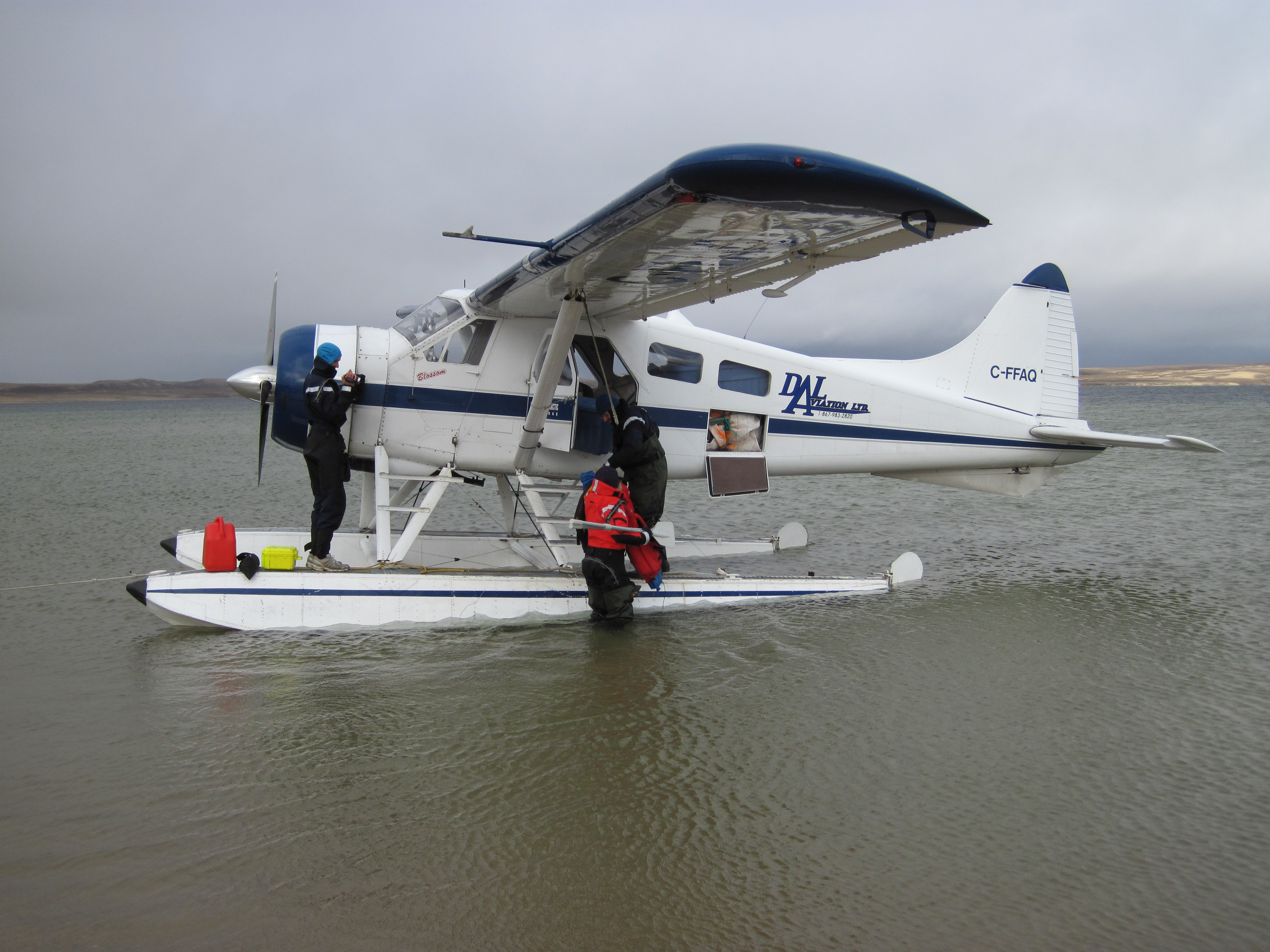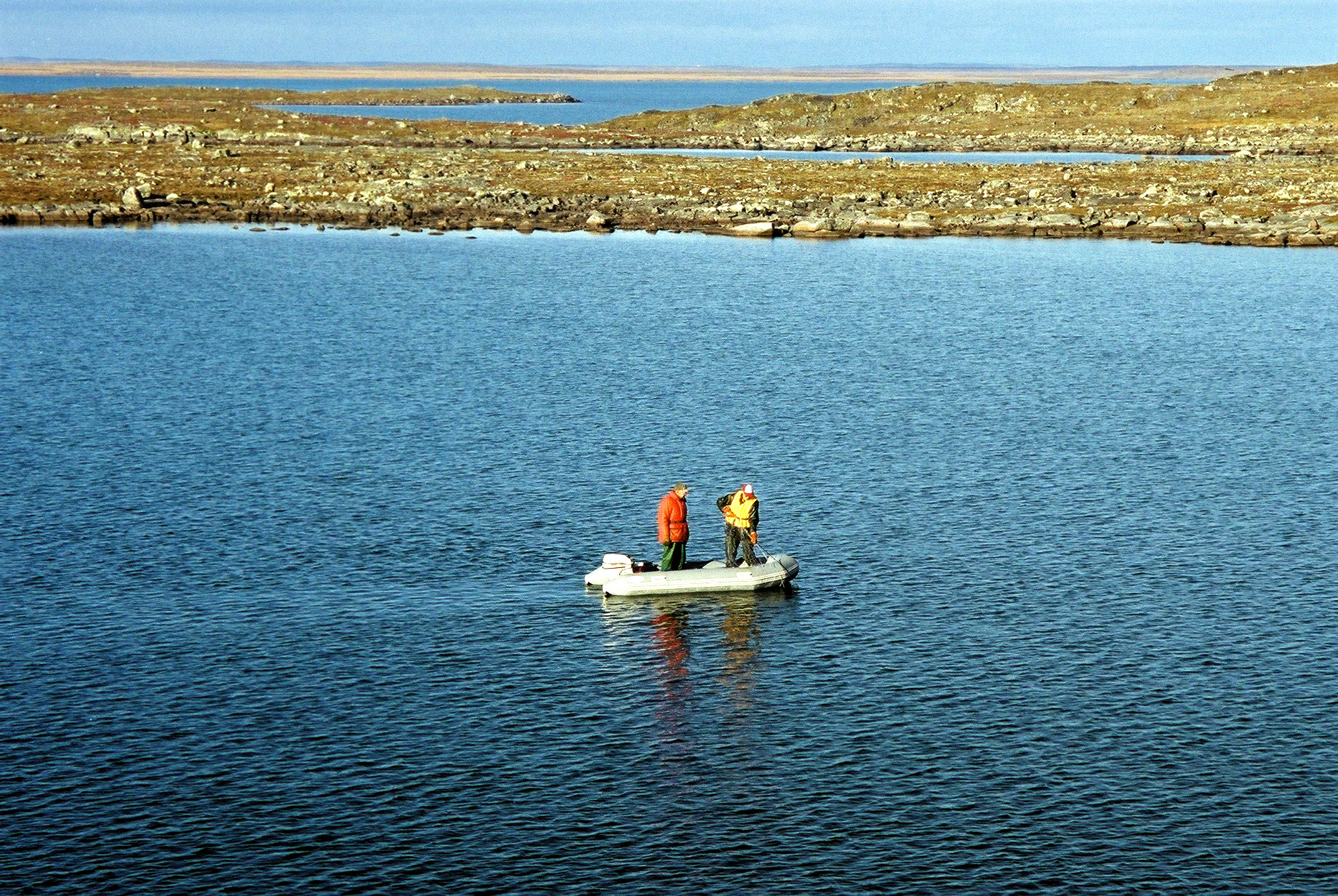Adventures in the Arctic
Published in Ecology & Evolution

One month into our high Arctic expedition, my team members burned me in effigy. Now admittedly, we had been huddled in our main tent for three solid days, while outside there were near-hurricane level winds, driving snow, and a temperature which had plummeted to a wind chill of -18 deg. The small inflatable boat that we used to collect our fish samples was heavily caked in ice on the lake shore. All of the expedition-quality tents in our camp were partially flattened by the winds, and one tent had completely blown away, along with all of its contents (except a person), and despite the fact that it was heavily staked. Our food supplies were running low. But all was fine until I told them that the team leader (me) should get all of the remaining chocolate bars because he was hungry. That’s when they burned me. It’s SO hard to find good team members!

This wasn’t supposed to have happened. It was August, and temperatures over the past week had hovered between 10-15 deg during the day. It was so warm that the biggest issue was the millions of blood-thirsty mosquitoes waiting to attack us the instant we uncovered a body part. Any body part. Our study site was an unnamed lake 2000 km north of Edmonton, one of thousands of untouched lakes in the high Arctic. To get there, we had jammed our 4-person team plus our gear into an Otter float plane in the tiny Inuit community of Cambridge Bay, and then flown for hours over the desolate tundra to the unnamed lake. To say it was remote is an understatement. We were closer to musk ox, wolves, grizzly bears and polar bears than to any other people. But in all probability, we were the first human beings to ever visit that lake. Ever. How cool is that?!! But as luck would have it, we experienced one of the worst summer storms in a decade. We were completely reliant on a float plane to fly us out, which it clearly couldn’t; there was absolutely no escape. It was like being in a movie. Very exciting! I thought of myself as Harrison Ford; my team thought of me as Justin Bieber.




Most of the expedition was spent sampling, measuring and dissecting trout from each of the pristine lakes we visited. But one of the highlights of the trip was scuba diving to recover an automated underwater camera that we had deployed the previous year at a depth of 6 metres in one of the lakes. The camera itself was based on the popular Go Pro camera used by surfers and bicyclists, heavily modified to do long-term time lapse photography by engineers at my institute. Housed in an oceanographic housing with an external power supply and an underwater flash, the camera was programmed to take 4 photos every day for a full year while on the lake bottom under up to 2 metres of ice.

To recover the camera from the lake bottom, one of my team members and I donned our scuba gear and prepared to dive to the bottom of a lake which had never been dived before. It took less than 5 minutes to locate the underwater apparatus, which thankfully had not been swept away by the ice the previous winter. While Shelley attached a line and float bags to the camera and tripod array, I shot video of the whole process and shivered. We wore dry suits of course, since the water temperature was 4 degrees. But we were still cold. As far as I know, no one else has ever scuba dived in lakes so far north before, which means we could have discovered anything lying on the lake bottom: I figured that alien spacecrafts were the most likely possibility. But alas, there were no spacecraft.
What is my take-home message from all of this? John, Cynthia and I, plus quite a few others at various times, spent about a month each summer for several years camping in untouched Arctic landscapes, catching huge lake trout with nets from a small Zodiac, working long hours under an endless Arctic summer sun, and seeing landscapes and wildlife that the vast majority of people will never get to see. It was magical, it was good science, and it was among the best time of my life. Wow – we scientists are so lucky to do what we do!
Follow the Topic
-
Nature Climate Change

A monthly journal dedicated to publishing the most significant and cutting-edge research on the nature, underlying causes or impacts of global climate change and its implications for the economy, policy and the world at large.



Please sign in or register for FREE
If you are a registered user on Research Communities by Springer Nature, please sign in